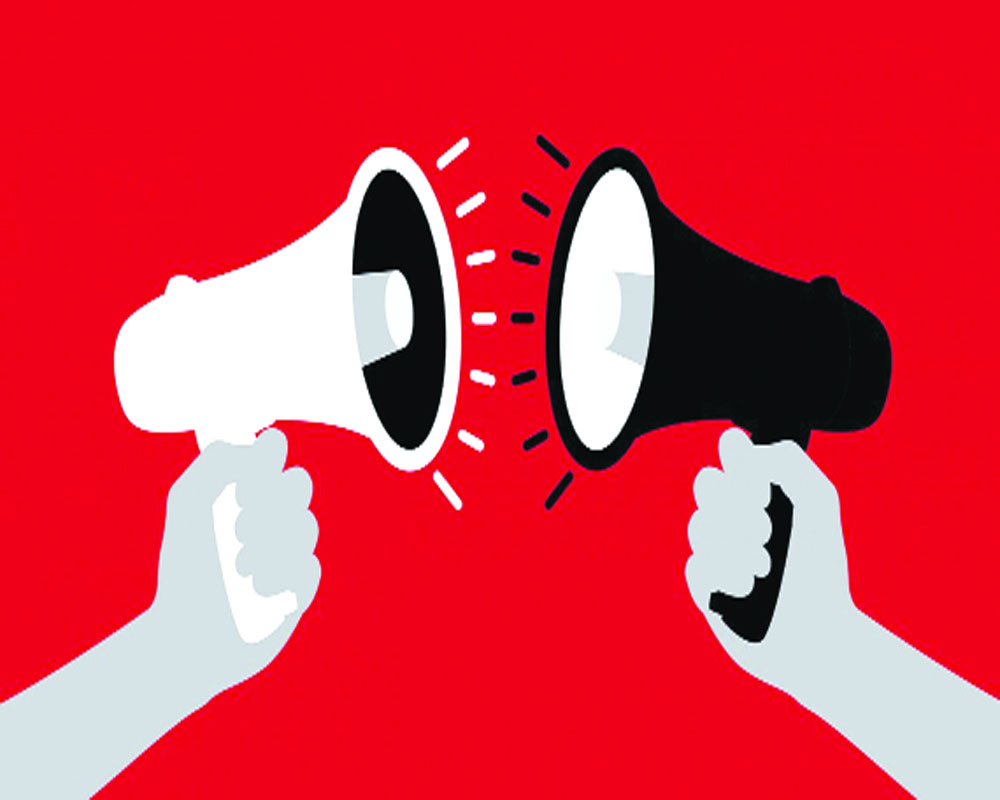
Author- Ubaid Ghazali, student, Jamia Hamdard University
Introduction
Hate speech is a big challenge in a world that values free expression. Hate speech can injure individuals and destroy social cohesion because it is insulting, disrespectful, or threatening. Striking a fine balance between safeguarding free speech and promoting social peace is a difficult endeavour that necessitates a thorough assessment of the legal implications of hate speech. This essay seeks to shed light on the subject by investigating the consequences of hate speech, the legal frameworks that control it, and the issues connected with striking a fair balance.
Recognising hate speech
The term “hate speech” refers to a variety of verbal, written, or symbolic expressions that incite hatred, prejudice, or physical harm against one person or group of people because of that person’s race, religion, ethnicity, gender, or another protected trait. Such speech may be broadcast using conventional media, social media sites, public events, or other channels. Hate speech has an effect that goes beyond simple offence; it feeds prejudice, reinforces stereotypes, and can even instigate violence, endangering communal harmony.
Framework of Law and Hate Speech
Many nations have passed laws to deal with hate speech, balancing the need to protect people and communities with the freedom of expression. Different legal strategies reflect different political, historical, and cultural circumstances. Some nations place a high priority on the preservation of free speech, permitting hate speech as long as it doesn’t immediately encourage violence. Others take more drastic measures, criminalising hate speech even if it doesn’t encourage violence. To avoid a chilling impact on free speech while guaranteeing the welfare and safety of marginalised groups, the proper balance must be struck.
Repercussions of Hate Speech
Hate speech has far-reaching effects on individuals, groups of people, and society as a whole. Individuals who are directly impacted experience mental anguish, fear, and a decreased sense of safety. Additionally, hate speech fosters a hostile atmosphere by upholding prejudice and discrimination, impeding social integration, and dividing people. Additionally, it jeopardises democratic ideals, destroys trust, and can trigger violent acts. To successfully prevent and manage hate speech, legal systems must take a proactive approach in light of these repercussions.
Finding the Balance
Free expression and social harmony must be balanced, which is a constant struggle that calls for subtle strategies. When drafting hate speech legislation, several things need to be taken into account:
- Contextual Analysis: When assessing hate speech, it is important to take into account the intended audience, any possible harm, and the targeted group. A nuanced strategy enables a fair evaluation and prevents pointless restrictions on acceptable discourse.
- Legal action against hate speech should be proportionate to the harm it causes. To avoid overreach and unjustified limits on free expression, it is essential to distinguish between harsh language and explicit encouragement of violence.
- Education and Awareness: In addition to legal measures, education and awareness programmes should be prioritised to address the core causes of hate speech. Promoting tolerance, inclusion, and empathy contributes to the development of a resilient society capable of overcoming the destructive impact of hate speech.
- Responsibility of Online Platforms: Given the prevalence of hate speech on social media, online platforms must play a role in preventing its spread. Implementing strict community norms, eliminating offending information quickly, and utilising smart algorithms can all help to prevent the amplification of hate speech while protecting free expression.
Limitations and Challenges
There are various obstacles to enacting effective hate speech legislation. The distinction between protected and hate speech can be hazy, necessitating careful interpretation and enforcement. In culturally varied societies, striking a balance that meets diverse perspectives while upholding international norms can be difficult. Concerns about the possible abuse of hate speech laws to silence dissenting viewpoints highlight the necessity for clear, well-defined legislation that protects free expression.
Conclusion
Hate speech poses a significant threat to social cohesion and individual well-being. To combat it legally, sophisticated legislation must consider various factors, including the context of hate speech, the potential harm, and the audience. Education and awareness-raising are crucial in addressing the root causes of hate speech, promoting tolerance, diversity, and empathy. Online platforms must take responsibility for fighting hate speech, setting strong community norms, removing offensive content, and using innovative algorithms to prevent it from amplifying. Despite challenges, maintaining legal frameworks that prevent hate speech while protecting the fundamental right to communicate ideas and perspectives is essential for promoting inclusiveness, tolerance, and respect. Working together to build a society where hate speech is marginalized and principles of freedom and respect prevail is crucial.
